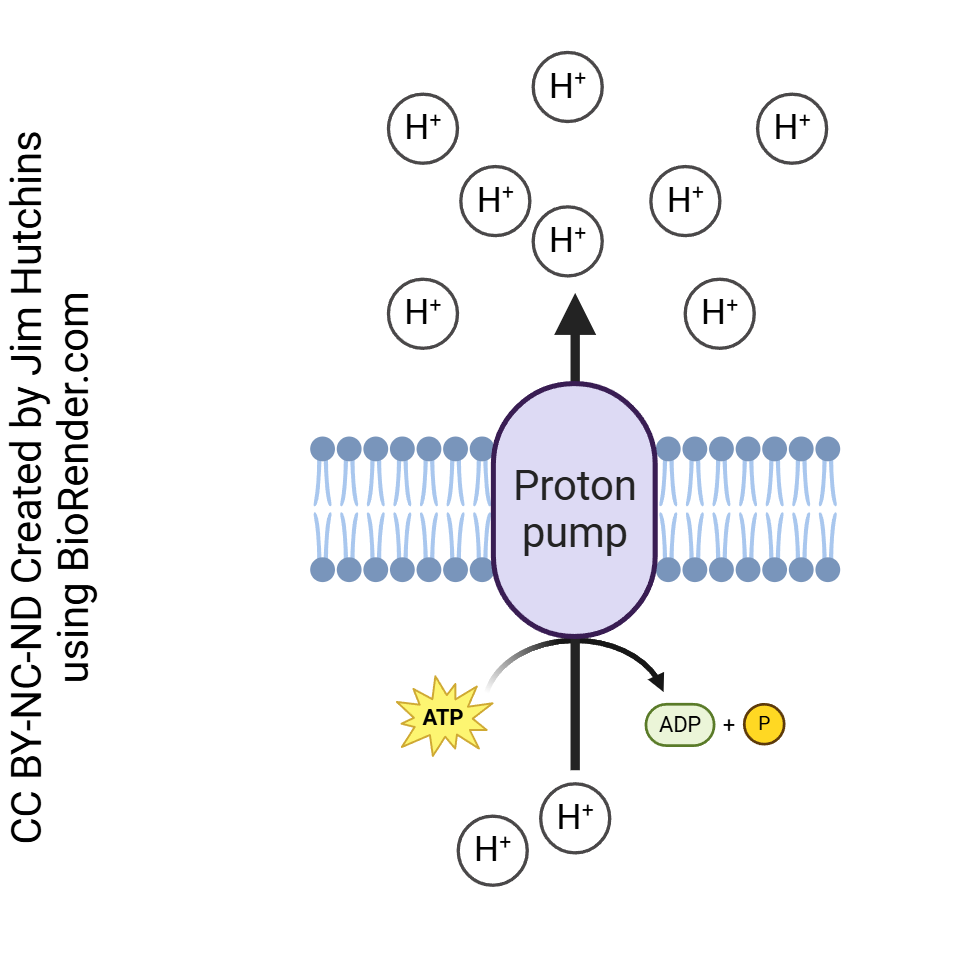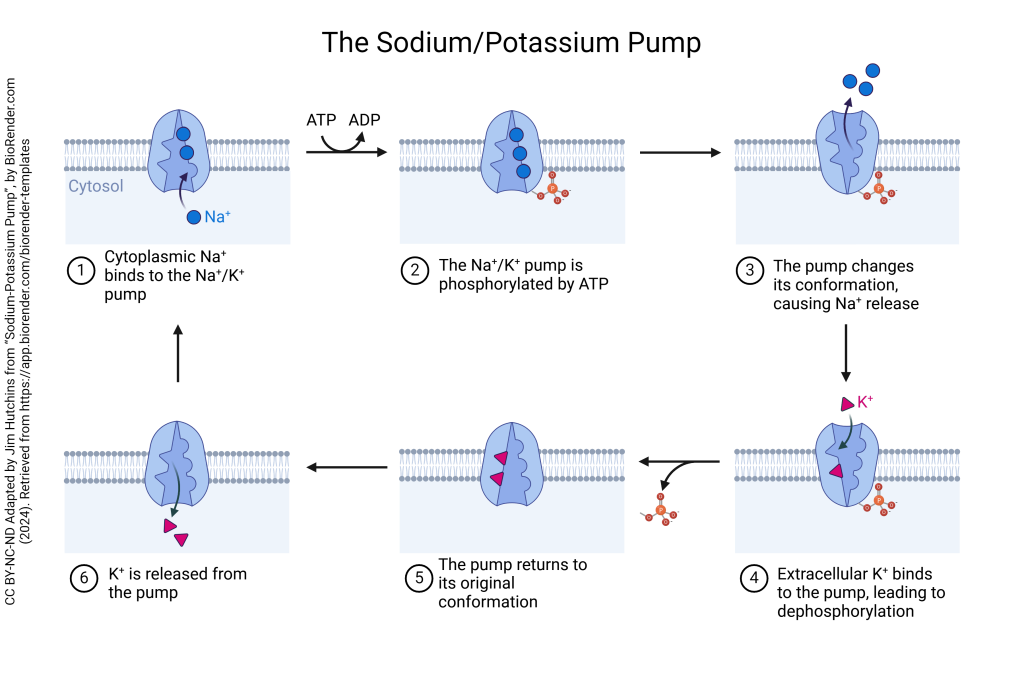Pumps
Garrett Nelson and Jim Hutchins
Chapter under construction. This is the first draft. If you have questions, or want to help in the writing or editing process, please contact hutchins.jim@gmail.com.
Introduction to Pumps
Neurons rely on precise ion gradients to generate electrical signals and communicate effectively. These gradients are maintained by ion pumps, which use energy to transport ions against their concentration gradients. Unlike ion channels, which allow passive diffusion, ion pumps actively regulate the intracellular and extracellular ionic environments. This regulation is essential for neuronal excitability, synaptic transmission, and overall brain function.
Role of Pumps in Neuronal Activity
Ion pumps are fundamental in maintaining the electrochemical gradients required for neurons to function properly. The most significant of these is the sodium-potassium pump, which helps establish the resting potential by actively moving sodium ions out of the cell and potassium ions into it. This creates the necessary imbalance of ions that allows for the generation of action potentials. Similarly, calcium and proton pumps help regulate ion concentrations that influence neurotransmitter release and intracellular signaling pathways, which are essential for communication between neurons. All these pumps work together to ensure that the neuron remains ready to respond to stimuli and transmit signals efficiently.
The Sodium-Potassium Pump
The sodium-potassium pump (Na+/K+-ATPase), as mentioned earlier, is one of the most essential ion pumps in neurons. Found in the plasma membrane, it helps maintain resting potential, regulate transport, and manage cellular volume. This pump maintains the necessary ion gradients between the inside and outside of the neuron, which is crucial for action potential generation and signal transmission. The sodium-potassium pump actively moves sodium (Na⁺) and potassium (K⁺) ions against their concentration gradients, a process requiring energy in the form of ATP.
Here’s how the pump works: initially, it has a high affinity for sodium ions on the inside of the neuron. Three sodium ions bind to the pump, triggering a conformational change. This allows ATP to bind, and through ATP hydrolysis, a phosphate group is added to the pump, causing it to shift and expose the sodium ions to the outside of the cell, releasing them into the extracellular space.
Once sodium is released, the pump’s affinity switches to potassium ions. Two potassium ions bind to the pump from the outside of the neuron. The phosphate group is released, causing another conformational change that moves the potassium ions into the cell. This restores the pump to its original shape, ready to begin the cycle again. The result is the transport of three sodium ions out of the cell and two potassium ions into the cell, consuming one ATP molecule per cycle.
This active transport mechanism is essential for maintaining the neuron’s resting membrane potential, typically around -70 mV. By keeping sodium concentrations high outside and potassium concentrations high inside, the pump ensures the neuron remains responsive to stimuli. Without this pump, the electrochemical gradients necessary for neuronal activity would collapse, and the neuron would be unable to generate action potentials.
Calcium Pumps
Calcium pumps (Ca²⁺-ATPases) regulate intracellular calcium levels, which are vital for many cellular processes in neurons, including neurotransmitter release and synaptic signaling. These pumps transport calcium ions out of the cytoplasm and into storage sites like the endoplasmic reticulum or extracellular space.
Calcium plays a critical role in activating cellular pathways, and its concentration must be tightly controlled to prevent excessive cellular activation. Calcium pumps help clear excess calcium from the cytoplasm, restoring low intracellular levels after signaling events. This maintains proper cellular function and prevents overstimulation.
Proton Pumps

Proton pumps (H⁺-ATPases) are responsible for moving protons across cell membranes, which helps regulate intracellular pH and maintain electrochemical gradients. In neurons, proton pumps contribute to the acidification of vesicles, such as lysosomes, and help maintain a neutral cytoplasmic environment. By pumping protons out of the cell or into intracellular compartments, they also assist in maintaining the proper pH for enzyme function.
Additionally, proton gradients are sometimes coupled with the transport of other ions, which helps maintain overall cellular ionic balance.
Media Attributions
- Sodium Potassium Pump © BioRender adapted by Jim Hutchins is licensed under a CC BY-NC-ND (Attribution NonCommercial NoDerivatives) license
- Proton Pump © Jim Hutchins is licensed under a CC BY-NC-ND (Attribution NonCommercial NoDerivatives) license


